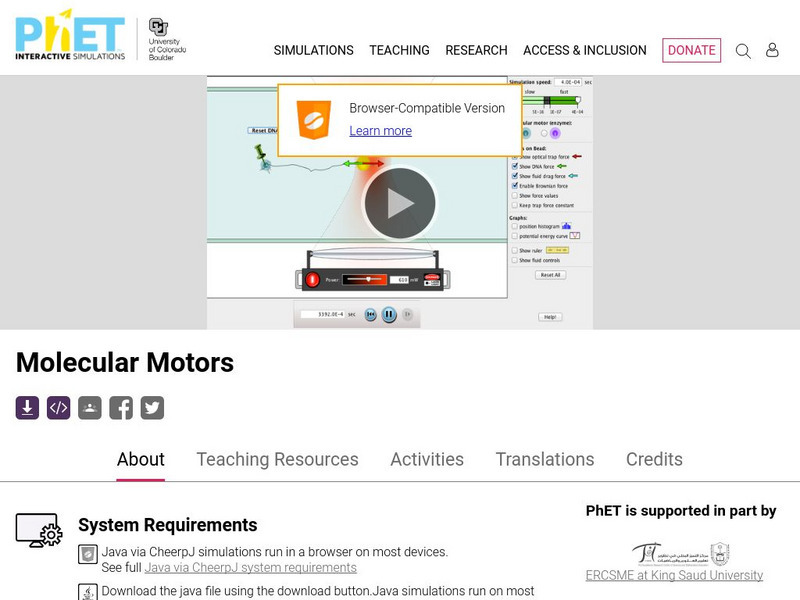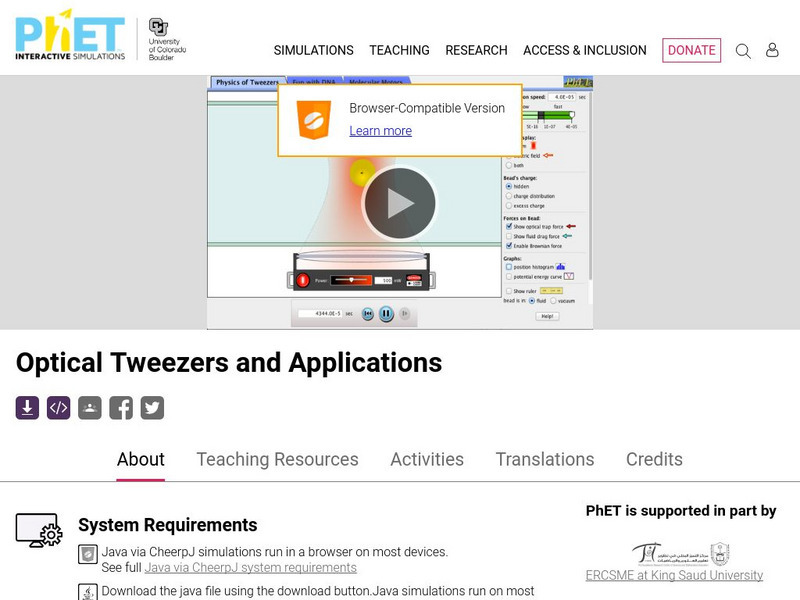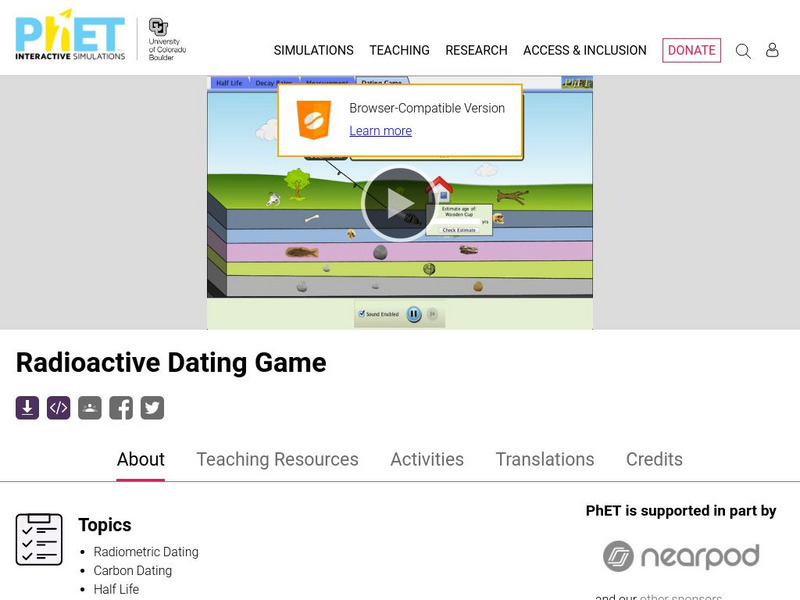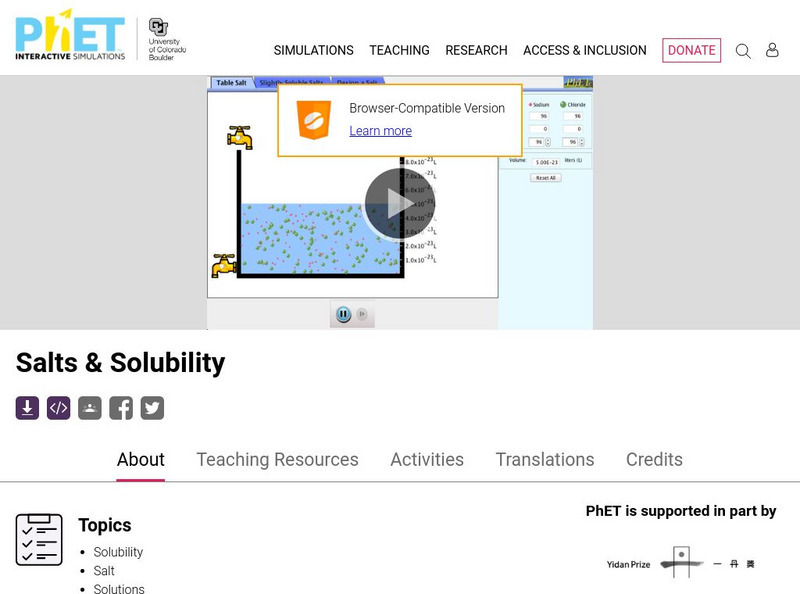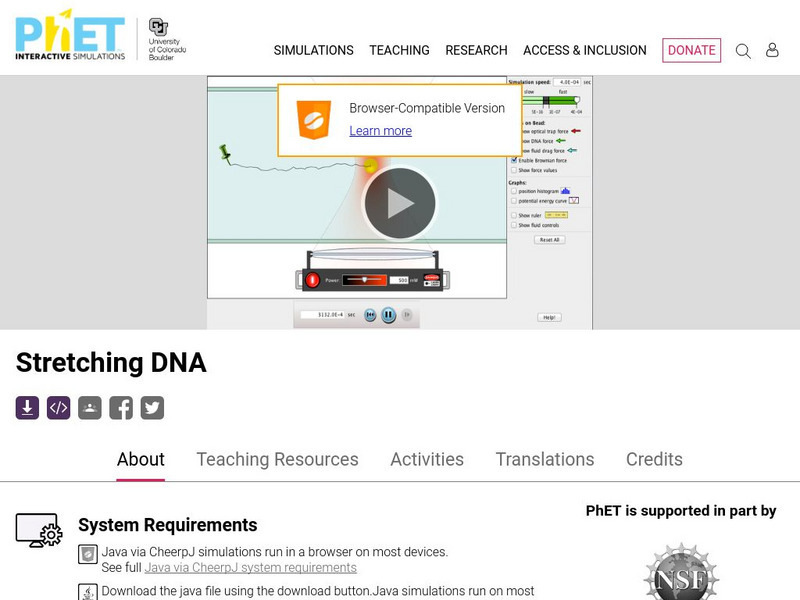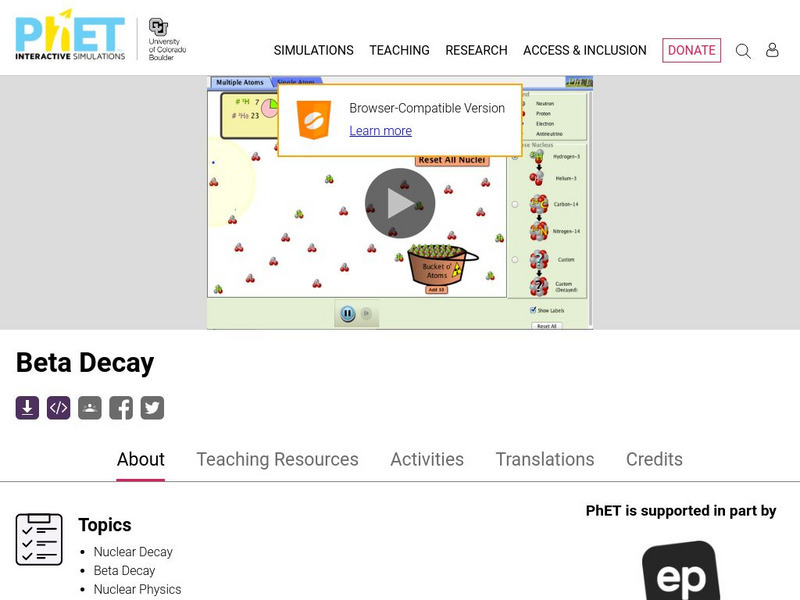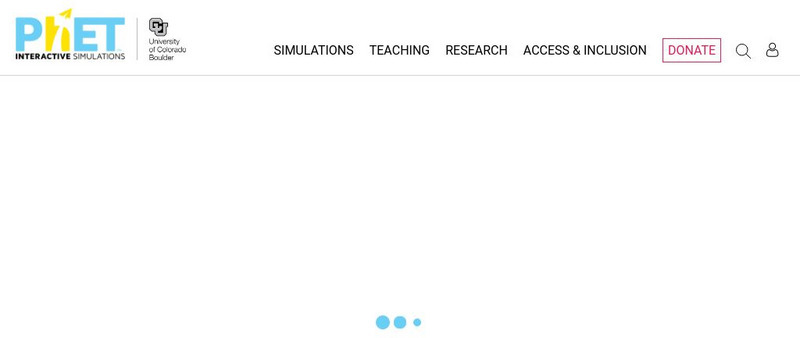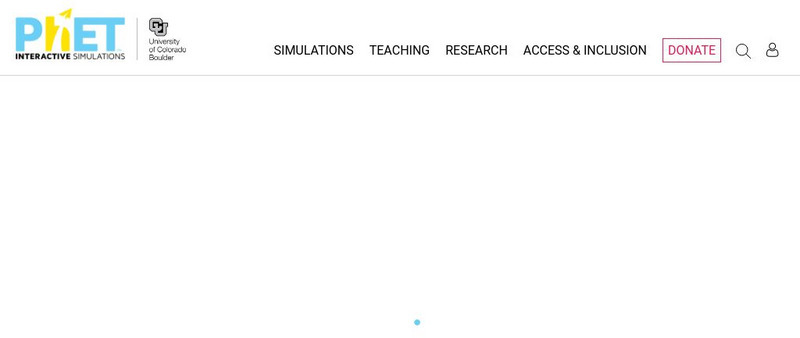University of Colorado
University of Colorado: Ph Et Interactive Simulations: Molecular Motors
Discover what controls how fast tiny molecular motors in our body pull through a single strand of DNA. How hard can the motor pull in a tug of war with the optical tweezers? Discover what helps it pull harder. Do all molecular motors...
University of Colorado
University of Colorado: Ph Et Interactive Simulations: Molecule Polarity
When is a molecule polar? Change the electronegativity of atoms in a molecule to see how it affects polarity. See how the molecule behaves in an electric field. Change the bond angle to see how shape affects polarity. See how it works...
University of Colorado
University of Colorado: Ph Et Interactive Simulations: Neuron
Stimulate a neuron and monitor what happens. Pause, rewind, and move forward in time in order to observe the ions as they move across the neuron membrane.
University of Colorado
University of Colorado: Ph Et Interactive Simulations: Optical Tweezers and Applications
Did you ever imagine that you can use light to move a microscopic plastic bead? Explore the forces on the bead or slow time to see the interaction with the laser's electric field. Use the optical tweezers to manipulate a single strand of...
University of Colorado
University of Colorado: Ph Et Interactive Simulations: Radioactive Dating Game
Learn about different types of radiometric dating, such as carbon dating. Understand how decay and half-life work to enable radiometric dating. Play a game that tests your ability to match the percentage of the dating element that...
University of Colorado
University of Colorado: Ph Et Interactive Simulations: Salts and Solubility
Add different salts to water, then watch them dissolve and achieve a dynamic equilibrium with solid precipitate. Compare the number of ions in solution for highly soluble NaCl to other slightly soluble salts. Relate the charges on ions...
University of Colorado
University of Colorado: Ph Et Interactive Simulations: Sound
This simulation lets you see sound waves. Adjust the frequency or volume and you can see and hear how the wave changes. Move the listener around and hear what she hears.
University of Colorado
University of Colorado: Ph Et Interactive Simulations: Stretching Dna
Explore stretching just a single strand of DNA using optical tweezers or fluid flow. Experiment with the forces involved and measure the relationship between the stretched DNA length and the force required to keep it stretched. Is DNA...
University of Colorado
University of Colorado: Ph Et Interactive Simulations: Sugar and Salt Solutions
What happens when sugar and salt are added to water? Pour in sugar, shake in salt, and evaporate water to see the effects on concentration and conductivity. Zoom in to see how different sugar and salt compounds dissolve. Zoom in again to...
University of Colorado
University of Colorado: Ph Et Interactive Simulations: Atomic Interactions
Explore the interactions between various combinations of two atoms. Turn on the force arrows to see either the total force acting on the atoms or the individual attractive and repulsive forces. Try the "Adjustable Attraction" atom to see...
University of Colorado
University of Colorado: Ph Et Interactive Simulations: Beta Decay
Watch beta decay occur for a collection of nuclei or for an individual nucleus.
University of Colorado
University of Colorado: Ph Et Interactive Simulations: Build a Molecule
Starting from atoms, see how many molecules you can build. Collect your molecules and see them in 3D!
University of Colorado
University of Colorado: Ph Et Interactive Simulations: The Greenhouse Effect
How do greenhouse gases affect the climate? Explore the atmosphere during the ice age and today. What happens when you add clouds? Change the greenhouse gas concentration and see how the temperature changes. Then compare to the effect of...
University of Colorado
University of Colorado: Ph Et Interactive Simulations: Isotopes and Atomic Mass
Are all atoms of an element the same? How can you tell one isotope from another? Use the sim to learn about isotopes and how abundance relates to the average atomic mass of an element.
University of Colorado
University of Colorado: Ph Et Interactive Simulations: Microwaves
How do microwaves heat up your coffee? Adjust the frequency and amplitude of microwaves. Watch water molecules rotating and bouncing around. View the microwave field as a wave, a single line of vectors, or the entire field.
University of Colorado
University of Colorado: Ph Et Interactive Simulations: Neon Lights and Other Discharge Lamps
Produce light by bombarding atoms with electrons. See how the characteristic spectra of different elements are produced, and configure your own element's energy states to produce light of different colors.
University of Colorado
University of Colorado: Ph Et Interactive Simulations: Radiowaves and Electromagnetic Fields
Broadcast radio waves from KPhET. Wiggle the transmitter electron manually or have it oscillate automatically. Display the field as a curve or vectors. The strip chart shows the electron positions at the transmitter and at the receiver.
University of Colorado
University of Colorado: Ph Et Interactive Simulations: States of Matter
Watch different types of molecules form a solid, liquid, or gas. Add or remove heat and watch the phase change. Change the temperature or volume of a container and see a pressure-temperature diagram respond in real time. Relate the...
University of Colorado
University of Colorado: Ph Et Interactive Simulations: States of Matter: Basics
After watching this simulation, students will be able to describe characteristics of the three states of matter. They will watch as atoms and molecules change between solid, liquid and gas phases.
University of Colorado
University of Colorado: Ph Et Interactive Simulations: Glaciers
In this simulation, users can adjust mountain snowfall and temperature to see the glacier grow and shrink or use scientific tools to measure thickness, velocity, and glacial budget. Java is required.
University of Colorado
University of Colorado: Physics 2000: More About Visualizing Electromagnetic Waves
Discusses the nature of an electromagnetic wave. Explains the oscillating electric field and represents it through clever graphics and animations.
University of Colorado
University of Colorado: Physics 2000: Elements as Atoms: The Pauli Exclusion Principle
The Pauli Exclusion Principle shows how electrons fill atomic orbitals. Includes biographical information on Wolfgang Pauli.
University of Colorado
University of Colorado: Physics 2000: Elements as Atoms: Electron Clouds and Energy Levels
An explanation of the different types of atomic orbitals, how they are filled according to the Pauli Exclusion Principle, and how many electrons can fit in each electron shell.
University of Colorado
University of Colorado: Physics 2000: Elements as Atoms: Quantum Numbers
Each electron has a set of quantum numbers that specify it's location, orbital, and energy in a unique manner.


